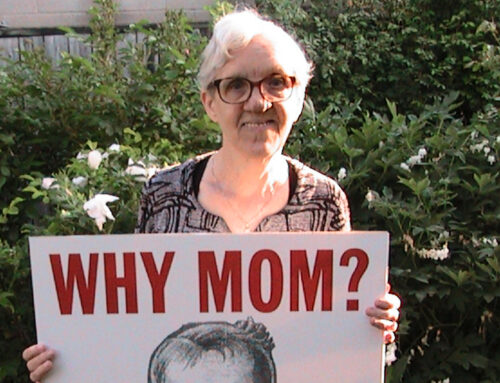The Hand of God: A Journey from Death to Life by the Abortion Doctor Who Changed His Mind Bernard N. Nathanson, M.D. Rege\nery, 206 pages $33.95
Reviewed by Sue Careless
The Interim
What kind of man aborts his own child, a child his partner begged him to keep? What kind of man overturns virtually all American laws restricting abortion and oversees 60,000 abortions? Can such a man live with himself?
Bernard Nathanson was the co-founder in 1969 of the National Association for the Repeal of Abortion Laws and was the director of New York City’s Centre for Reproductive and Sexual Health,(Women’s Services), then the largest abortion clinic in the world. A lifelong atheist he was received in the Catholic Church just after his autobiography, The Hand of God was published.
Idealistic concerns
Nathanson is neither self-pitying nor self-serving. Nor does his journey get lost in medical or legal minutiae, personal psyhchobabble or religious sentimentality. In just under 200 pages the author details his early family and professional life and the idealistic concerns that let him to crusade for abortion.
He has told some of this story before, in his 1979 semiautobiographical book Aborting America. But his father, whom he “loved deeply and loathed equally deeply” was still alive. Only now does he disclose the strange father-son tension that strangled any love for his mother.
While The Hand of God reveals more of his early formatative years, he still says little of his three failed marriages. “I failed those whom I loved. Of my second and third marriages I cannot write in any detail-it is still so painful for me.” Most of all he grieves his relationship with his surviving son. It was while he was running all over the country lobbying legislators to repeal the abortion laws that he failed to see his son grow up. His absence has led to serious problems with the son.
When Nathanson took over as director of Women’s Services he threw out the dirty drunks and losers and hired surgically clean but morally sterile abortionists like himself.
“The physician staff was deplorable, consisting of an extraordinary variety of drunks, druggies, sadists, sexual molesters, just plain incompetents and medical losers. At least one was a fugitive from justice….”Nathanson rid the clinic of them but, “I had replaced a goggle of medical rogues and ruffians with a spotless, superbly trained, highly competent physicians carrying out the same grisly tast.”
Why were these technically superior physicians willing to continue the same unspeakable project. One reason: “The intoxication flush of potency that attends the sacred privilege of invading another’s body with moral sanction and legal impunity.”
Few abortionists introduce themselves to the patient and only examined her once she is anaesthetized. They then suction out the uterus—never to see the patient again. “Where is the doctor-patient relationship relationship here?
The abortion mills have increased but they no longer attract the idealistic crusaders. Abortion is “a tedious assembly-line, marginally respectable occupation that demand[s] little or nothing from the physician, technically or ethically.” Abortion is surgically unchallenging work. “Younger OB-GYNs trained in the era of ultrasound and with far more worthwhile endeavour open to them,” are leaving the abortion field open to “the quacks and the hacks.”
“Abortion is a blind procedure. The doctor does not see what he is doing.” Even when he sees the “little pile of meat in a gauze bag” at the end of the operation it does not hit him. Ultrasound confronted Nathanson with the sight of a life, moving fetus in the womb and “I simply lost my faith in abortion on demand.” He was so profoundly affected that he created the film, The Silent Scream, the ultrasound film of a baby actually being aborted.
The New England Journal of Medicine reported that when 10 pregnant women came to an abortion clinic and were shown ultrasound pictures of the unborn childfetus before the abortion, only one went through with the procedure. Network television has still not broadcast the Silent Scream. Were they to, the abortion debate would be radically altered.
He also exposes the horrific logistics of fetal transplants. “We would need to abort 11.2 million fetuses annually [11 million more than currently] at the 14-20 week stage to treat all the [American insulin-dependent diabetics. We would need to abort 15to 20 million babies at nine to 12 weeks to harvest sufficient tissue to treat various neurological diseases.”
Frightening scenario
Once RU-486 is in common use, fewer fetuses will be available. Nathanason predicts that human fetal tissue will he to be imported from the Third World. Will unscrupulous entrepreneurs encourage women to become pregnant three or four times a year for the sole purpose of selling their fetal tissue and having it smuggled into the West? Leftover fetal carcases could be used as food to feed the homeless and the Third World (from whence it came). This grotesque scenario exposes the macabre in fetal tissue research.
Nathanson faced the monstrosity of the evil he had perpetrated and contemplated suicide. He was struck, however, by the profound peace of both Catholics and Protestants, as they participated in Operation Rescue. Eventually he come to experience a sense of Christian Forgiveness.
Nathanson does not discuss why a vibrant Judaism would not have sufficed, (his Judaism had always been “perfunctory, nor why he chose Catholicism over Protestantism.
The Hand of God is neither a heavy tome nor a flippant grab-bag of slogans. It is eminently readable and offers an astute understanding of the life and death issues of our day by an abortion insider who got out. At Life Cycle Books: 1(800)214-5849




